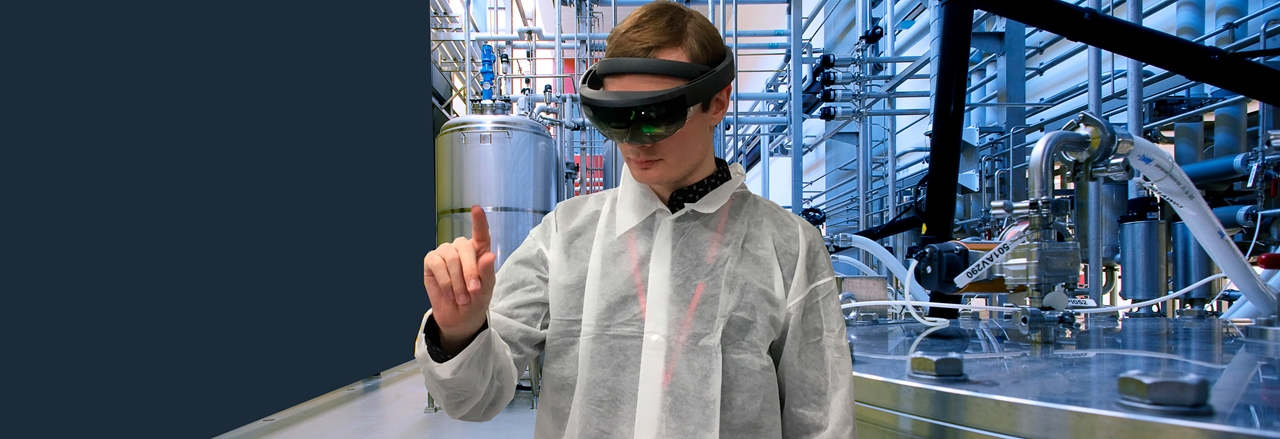There are clear benefits of using extended reality (XR) technologies like virtual reality and augmented reality for training and guidance in pharma. But do regulators also support the use of virtual solutions? Do you need to validate the use of virtual reality over traditional methods? In this article, we’ll look at the considerations you need to make when bringing virtual solutions into your processes.
Let’s start with the facts: Neither FDA nor EMA have published any official statement that they support the use of XR technologies for validation or other purposes. Neither do they have any specific guidelines on the subject. However – and perhaps more importantly – they have also not released any statement that they do not support it. FDA, however, openly encourages innovation, smarter thinking and cost reduction for the benefit of the patient – as long as compliance with cGMP is kept. XR technologies is definitely in the category of innovation, so pharma manufacturers just have to be thorough in the way we justify and qualify the use of it.
With the cited benefits of XR technologies, like more effective training, faster maintenance and problem solving and the ability to solve potential GMP issues already in the facility design, there is no reason to think that authorities will not approve of the use of virtual solutions. But they will require that you have given some thought as to why and how you use virtual solutions for certain purposes. And those thoughts need – to some extent at least – to be documented.
There is no reason to think that authorities will not approve of the use of virtual solutions. But they will require that you have given some thought as to why and how you use virtual solutions for certain purposes."
Justify the usage of virtual solutions
As a starting point, you need to explain and justify why you use XR technologies instead of traditional methods. And you need to make sure that you explain why it is sufficient for the purpose – or perhaps why it is better than traditional methods.
Whether you plan to use XR technology for operational assistance, training, remote engineering or audits, it is not difficult to identify the benefits. We dive into some of the most important ones in another TechTalk that looks at how you can boost daily operations with XR.
Document the effectiveness and sufficiency of your virtual solution
In terms of documentation, you have to document that the XR program is consistent with the relevant standard operating procedures. For instance, if you are using virtual reality for training purposes you need to document that the program includes all the steps in the standard operating procedures that are being trained in. In other words, you have to document that the training is sufficient. This can be done by having a person who is already trained in the traditional SOP sign off on it.
Prove the reliability of your virtual solution
Integrating processes that used to be physical/manual with an IT system might minimize the risk for human error and make continuous documentation easier. But as with everything IT, you need to make sure that the IT system is secure. In the context of using VR for training or remote engineering, you need to prove that the program cannot be manipulated or changed after it is approved and launched.
The HoloLens hesitation
So, from a regulatory stance, there are no arguments against using XR technologies. However, there is a catch. While there are no requirements that forbid the use of Microsoft HoloLens’ inside a cleanroom, the HoloLens – like everything else entering the cleanroom – need to be sterilized. And the type of film that Microsoft currently use for coating on the HoloLens (and which is needed for the device to work) cannot withstand repeated sterilization.
With the major potential in pharma, we believe that is it very likely, that Windows will launch a “cleanroom-friendly” version of HoloLens at some point. For now though, use of HoloLens is restricted to processes in non-classified processes or in processes outside of cleanroom.
Combining GMP and VR expertise for better results
We’ll round of this article with a good advice: Team up with a XR company that specializes in GMP environments when developing e.g. your new training program. With the radical growth in the usage of XR technologies, there are many companies that are very strong in VR and programming. But it’s not enough to be experts on just the technology. You need people with deep insight into GMP and who are familiar with your own standard operating procedures to participate in the development of the solution. Yes, you can let your own GMP experts work close together with a VR company to develop the solution but if the VR companies do not truly understand GMP, you will most likely have to do a number of iterations to reach a sufficient solution.
